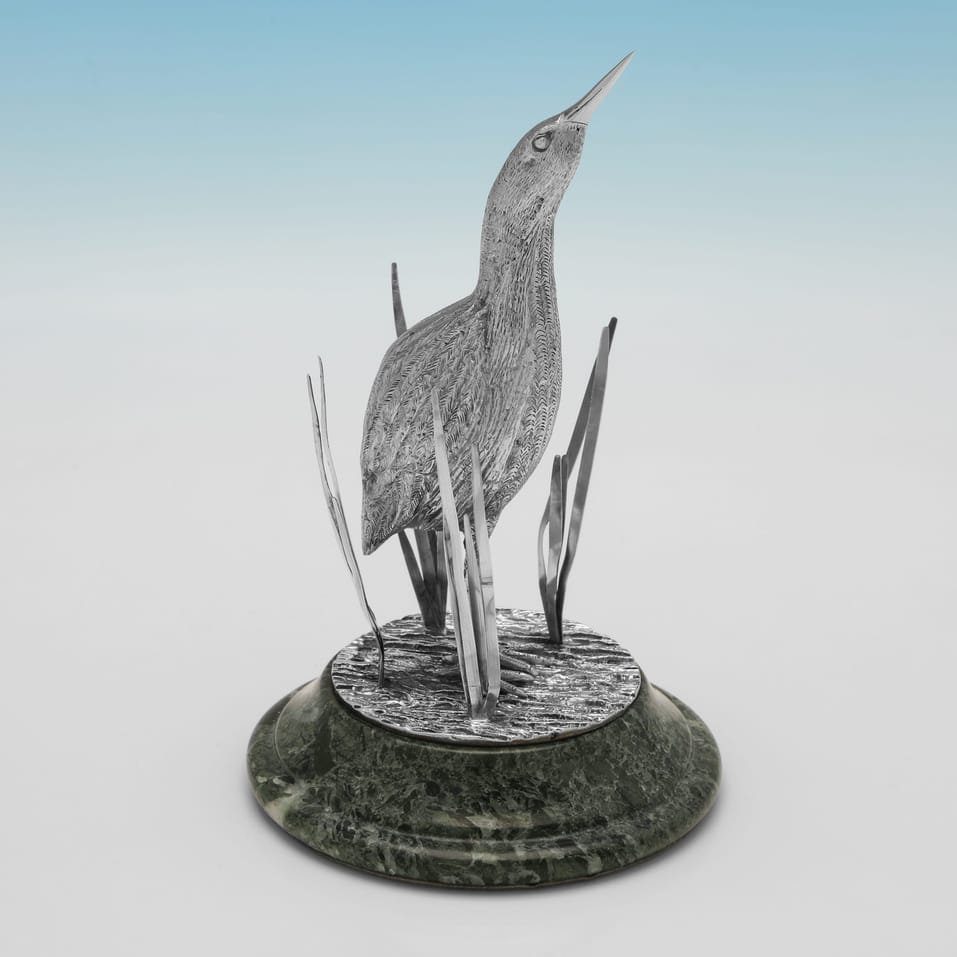BARNARDS
Edward Barnard & Sons Limited, commonly referred to as Barnards, is one of the most recognisable names of silver manufacture in England, and their work is synonymous with quality and finesse. While the majority of their production was during the Victorian period, the company actually boasts the longest lineage of any manufacturing silversmith in the World, and patrons have included Royalty, Religious foundations and members of the aristocracy.
Tracing its origins back to 1679, Anthony Nelme can be considered as the original founder of the Barnards company. Nelme is recorded as working from Ave Maria Lane in the City of London, having served as apprentice in 1672 to first Richard Rowley, and then completing his apprenticeship with Isaac Deighton. Anthony Nelme was considered the best English born goldsmith working at this time, and his patrons including Queen Anne and many other members of high society. The business changed hands from Anthony Nelme to his son Francis Nelme in 1722, who continued it until it was taken over in 1739 by Thomas Whipham, again passing it to his son Thomas Whipham II in 1756, in partnership with Charles Wright. In 1775 Whipham II retired and the business continued under the management of Wright until it was amalgamated with that of Thomas Chawner in 1786. Thomas Chawner had, since 1773, Edward Barnard I as his apprentice, so the connection to the Barnard name in this business can really be traced back to this point. When the two firms joined, and under the management of Henry Chawner, Edward Barnard became the foreman, and the driving force behind the company. In 1796 Henry Chawner took John Emes as a partner. Emes was an engraver, and also a clever businessman who brought investment into the rapidly expanding business. Two years later Chawner retired, and the company continued under the ownership of John Emes alone, with Edward Barnard now becoming the manager. In 1808 Emes passed away, and his widow Rebecca made Edward Barnard a partner, continuing the company as Emes and Barnard. Rebecca Emes retired from the business in 1829, leaving it in the hands of Edward Barnard and his sons, William, John and Edward, who renamed it Edward Barnard & Sons. In 1838 the company moved to a larger factory space on Angel Street, St Martin’s-le-Grand, in the City of London. The business thrived, and in 1898 the factory was demolished, and a new, even larger space was constructed at 22-24 Fetter Lane. It was here, in 1910, that the firm converted to a limited liability company and renamed themselves Edward Barnard & Sons Limited, with Walter, John and Stanley Barnard named as the directors. In 1919 the business moved to temporary premises just off Farringdon road, before finally moving, in 1920, to the well known address of 54 Hatton Garden, where they remained (as a subsidiary of Padgett & Braham Limited after 1977) until 2006.
2 results
j2560 : Sterling Silver Sandpiper Model
Hallmarked In 1979
Hallmarked in London in 1979 by Barnards, this Elizabeth II period, Sterling Silver Model of a Sandpiper, is handsomely cast in a natural pose, and is presented on a green stone base. The model measures 7.25"(18.5cm) tall, by 4.5"(11.5cm) in diameter.
£1,195
b5395 : Sterling Silver & Glass Centrepiece
Hallmarked In 1854
Hallmarked in London in 1854 by Barnards, this stunning, Victorian, Antique Sterling Silver Centrepiece, features a central glass bowl and 5 spaces for candles. The centrepiece is richly decorated, featuring shell and scroll motifs, and stands on a triangular base. The centrepiece measures 29"(74cm) tall, by 18.5"(47cm) in spread, and weighs 178 troy ounces.
£31,750

